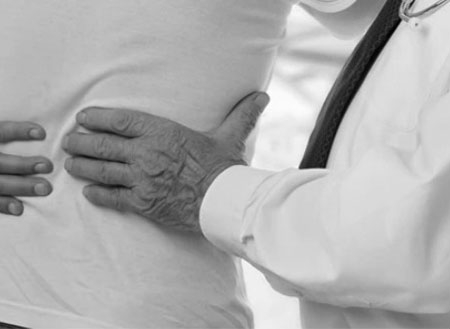Of all orthopedic injuries that exist, injuries relating to the spine often induce the most panic and anxiety and understandably. Obviously, severe injuries to the spinal cord can cause permanent damage and paralysis. However, these injuries are not the ones walking through our doors for a consult in our Spine Center. More often are the variety of spine-related pathologies that are not life or limb threatening, but painful and life hindering nonetheless. One category of back problems is known as the ‘spondies.’ Three variations of this pathology exist: spondylosis, spondylolysis, and spondylolisthesis. What a mouthful! The root of these words come from the Greek language: ‘spondylos’ meaning spine or vertebrae and ‘lysis’ meaning breaking or loosening. Let’s learn!
Spondylosis is an age-related degenerative condition that affects the vertebral column, typically in the cervical region (or neck) and the lumbar region (lowback. Just as hips, knees, and shoulders wear out, so do spines. The vertebral discs can dehydrate over time, which deteriorates the cushioning between vertebral bodies. This, in turn, can cause degenerative changes including bony protrusions and a narrowing of the canal through which the spinal cord runs. This is a common problem in the older demographic and is often associated with neck and low back pain and stiffness. If the canal is narrowed enough to affect the nerves, one might experience numbness, tingling, weakness, or loss of coordination in the arms or legs depending on where the problem lies. Loss of bladder or bowel control can present in lumbar spondylosis Treatment includes anti-inflammatory medications, steroids, muscle relaxers, activity modification, epidural steroid injections, and physical therapy.
Spondylolysis is a defect or stress fracture in the vertebral arch and most often occurs in the lumbar spine or low back area. Your spine specialist will take a detailed history and perform some special tests as well as x-rays to determine if you have this condition. It is often associated with pain when a patient arches his or her back. Repetitive trauma, whether at work or in sport, is often thought to be the cause of this injury. Athletes who are more susceptible include gymnasts, wrestlers, tennis players, volleyballers, footballers, and divers who often find their spines in an extended position. This defect, though visible, is minimal and in proper alignment with the rest of the vertebrae. It is if fractures on both sides of the spine go untreated and slip out of position that it becomes significantly more problematic because now it is a spondylolisthesis.
A spondylolisthesis can result from degenerative or genetic causes that weaken the bones and leave them susceptible to injury. It can also be caused by trauma. Just like the spondylolysis, it most often occurs in the lumbar spine and comes with low back pain and stiffness and even nerve-related symptoms if the displaced piece of bone further narrows the spinal canal. Sometimes advanced imaging (a CT scan or MRI) of the spine is needed after x-rays are taken.
Treatment of spondylolysis and spondylolisthesis includes physical therapy, back bracing, activity modification, anti-inflammatory medications, and sometimes epidural steroid injections. If identified early and treated properly, this injury often stays out of the operating room. It is only when the spondylolisthesis goes unidentified and the fragment further displaces that sometimes a fusion of the vertebrae is necessary. If you have back pain slowing you down, schedule a consult with one of our spine specialists to get back on track!

